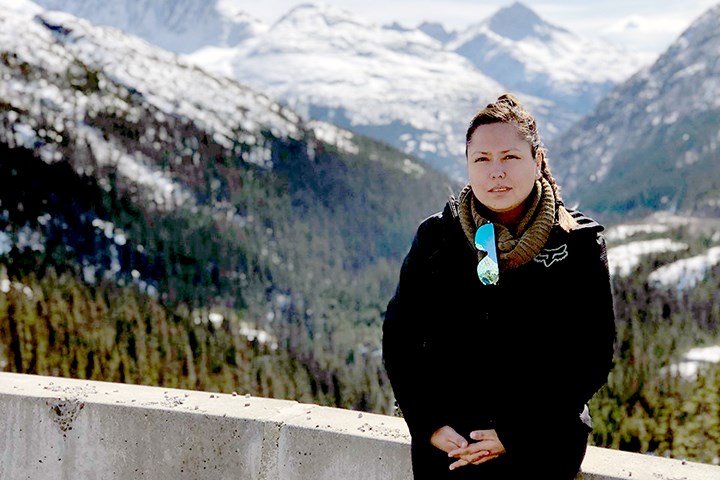More than two decades after a groundbreaking decision from the Supreme Court, B.C. legal experts say there are still many gaps in how what is known as the Gladue ruling, which applies to Indigenous people in the justice system today.
Gladue reports are meant to be utilized to lead to fairer sentencing for Indigenous offenders — but people working in the system say the reports aren’t used as consistently or comprehensively as they should be.
Meanwhile, Indigenous people are still overrepresented in Canada’s prisons, with the numbers on a trajectory to keep growing.
Rachelle Dallaire, the executive director of the Victoria-based Indigenous Perspectives Society, says one of the problems is that there are currently no national standards for applying Gladue, which means that the reports aren’t always used when they should be.
“It’s a complex dilemma,” she says, “because you have all of these provinces, you have all of these diverse needs.”
This lack of consistency was highlighted in last year’s Final Report of the National Inquiry into Missing and Murdered Indigenous Women and Girls, where many women who had been incarcerated revealed that they did not receive a Gladue report, even when requested.
Gladue reports are a voluntary written option for Indigenous defendants, meant to give the court a better understanding of that person’s life and the impacts of colonization.
The reports often detail stories of defendants having experienced abuse, addiction, extreme poverty or other impacts stemming from residential schools and other colonial systems. The idea is to give a clearer picture of what led to the crime so the sentencing judge can look at restorative justice alternatives to imprisonment.
Dallaire says more consistency Canada-wide would normalize the use of Gladue reports in courtrooms, particularly in the case of applying Gladue to mandatory minimum sentences where judges do not have as much judicial discretion on whether or not to apply Gladue as they would in other detention decisions such as bail hearings.
Laura Hoversland from Teslin Tlingit Council — now based in Victoria — has done a lot of work around Gladue as a former justice manager for the Council of Yukon First Nations.
Having led the implementation of the Gladue program with the Yukon Council of First Nations, Hoversland says she has noticed many gaps in how Gladue is delivered — including proper follow-up and debriefing with both offenders and report writers.
“People can say, ‘no I don’t want aftercare,’ but I think everybody should have that standard approach, those options to choose amongst themselves,” she says. Aftercare is essentially following up with the offender to see if they have completed their conditions as set out by the court.
Hoversland realizes that it might take a whole other pot of money required for aftercare of offenders and for Gladue writers themselves to assist with debriefing the heavy content that writers carry in their workloads.
In the meantime, the cracks that exist — until they’re fixed — continue to impact Indigenous people in the justice system.
In January, the Correctional Investigator of Canada announced that the representation of Indigenous people in federal custody had reached “historic highs” — surpassing 30 per cent.
Though Indigenous people account for just five per cent of the Canadian population, Dr. Ivan Zinger’s report showed a growing trend for numbers already six to seven times higher than the national average — something he called a “national travesty.”
“On this trajectory, the pace is now set for Indigenous people to comprise 33% of the total federal inmate population in the next three years,” he said in a release at the time.
Hoversland says the ideal implementation of Gladue is to “have it managed by First Nations,” with First Nations people themselves writing the reports so that they aren’t coming from a colonized approach.
Currently, probation officers, court workers, First Nation organizations and lawyers can all write Gladue reports with the proper training.
The reports stem from the 1999 Supreme Court of Canada case of Jamie Gladue, a Cree woman who appealed a manslaughter sentence because the judge did not apply section 718.2(e) of the Criminal Code — about considering a Indigenous defendant’s background — to her case.
Gladue lived off reserve in Nanaimo, but once the case reached Canada’s highest court, it was agreed that lower courts should consider the impacts of colonization for any Indigenous offender regardless of whether they live on or off reserve.
The creation of Gladue reporting is only one piece of the systemic puzzle. However when properly applied, the reports help the court make a decision on fair sentencing, which can result in an alternative to incarceration.
There are currently six First Nations (Gladue) Courts in total in British Columbia, located in Cowichan Valley, Cknúcwentn (Kamloops), Merritt, New Westminster, Chet wa nexwníw̓ ta S7eḵw’í7tel (North Vancouver) and Prince George.
Bridging the systemic gaps that exist in applying Gladue is an ongoing process for organizations like Indigenous Perspectives Society.
The organization has offered Royal Roads University-endorsed 10-week educational programs in writing Gladue reports since 2018.
In the third week of November, Dallaire says, the society introduced a new program tailored specifically for probation officers, condensed into three weeks instead of 10.
“That particular audience already has a clear understanding of the court system,” Dallaire says.
The training is not only for B.C. residents which means that even if Gladue reporting is not being utilized in other jurisdictions, anyone can take the course and apply it in their respective community.
“It’s about justice, the over representation [of Indigenous people in the system], looking at the intersection of colonization, current impacts in the justice system,” she says.



